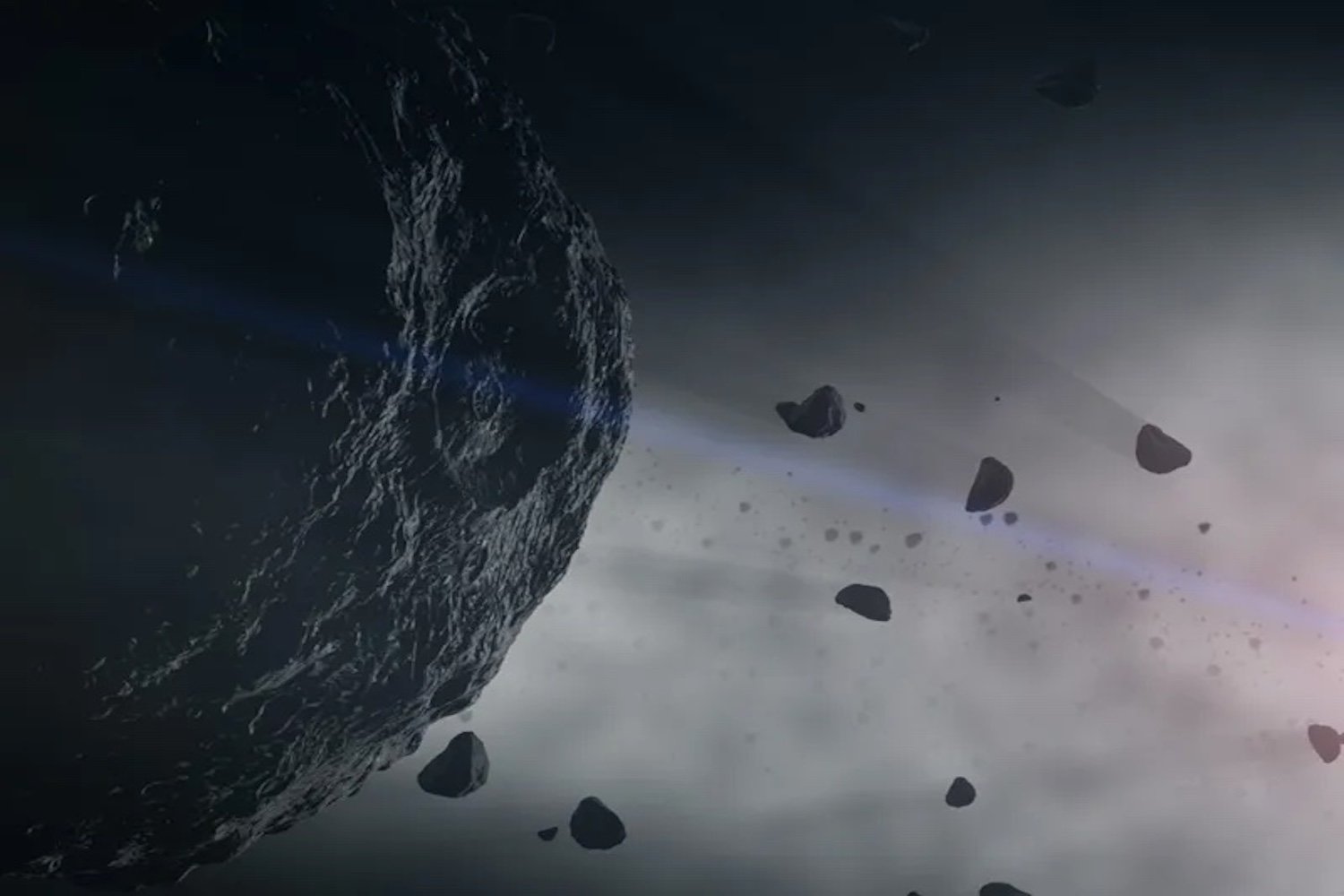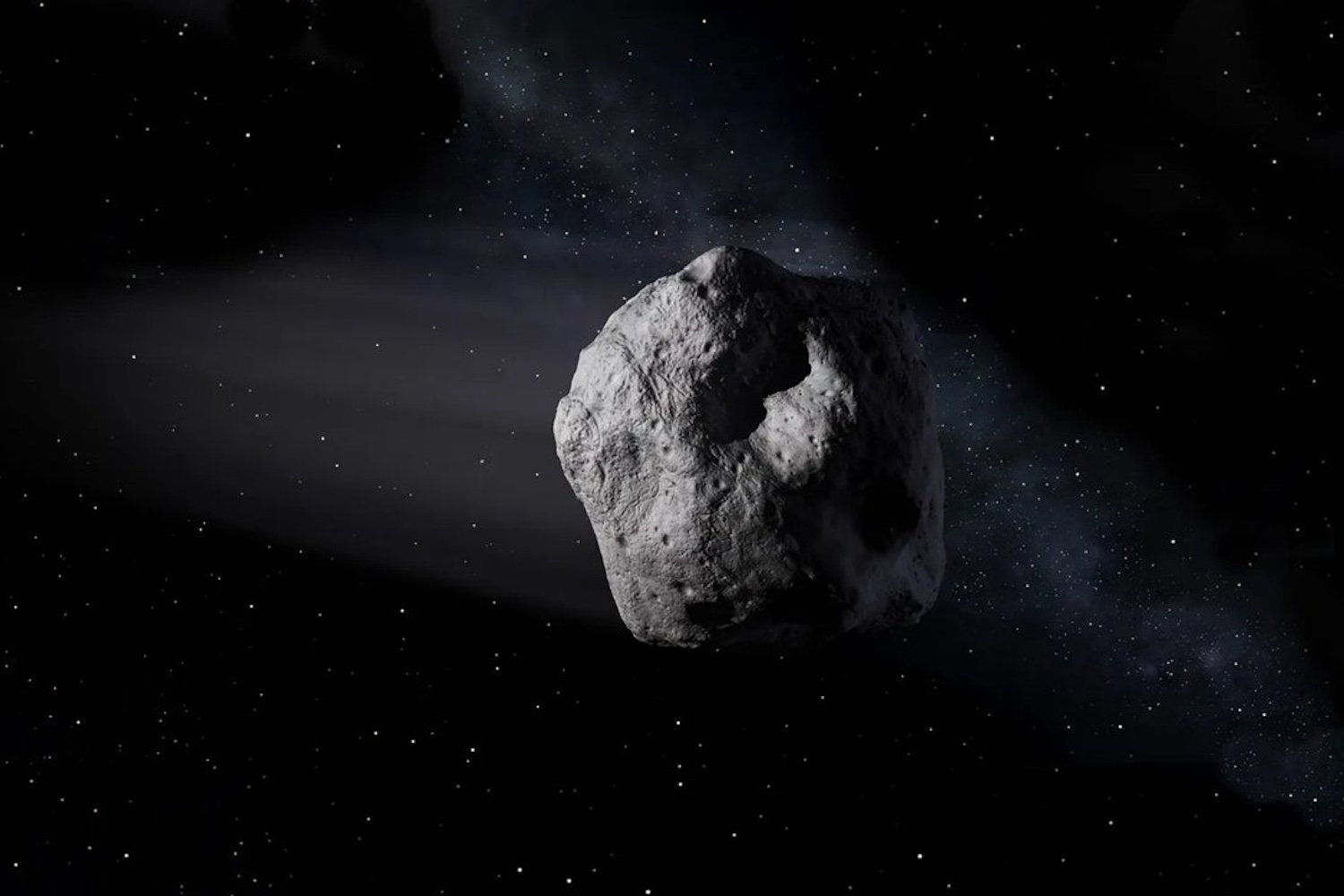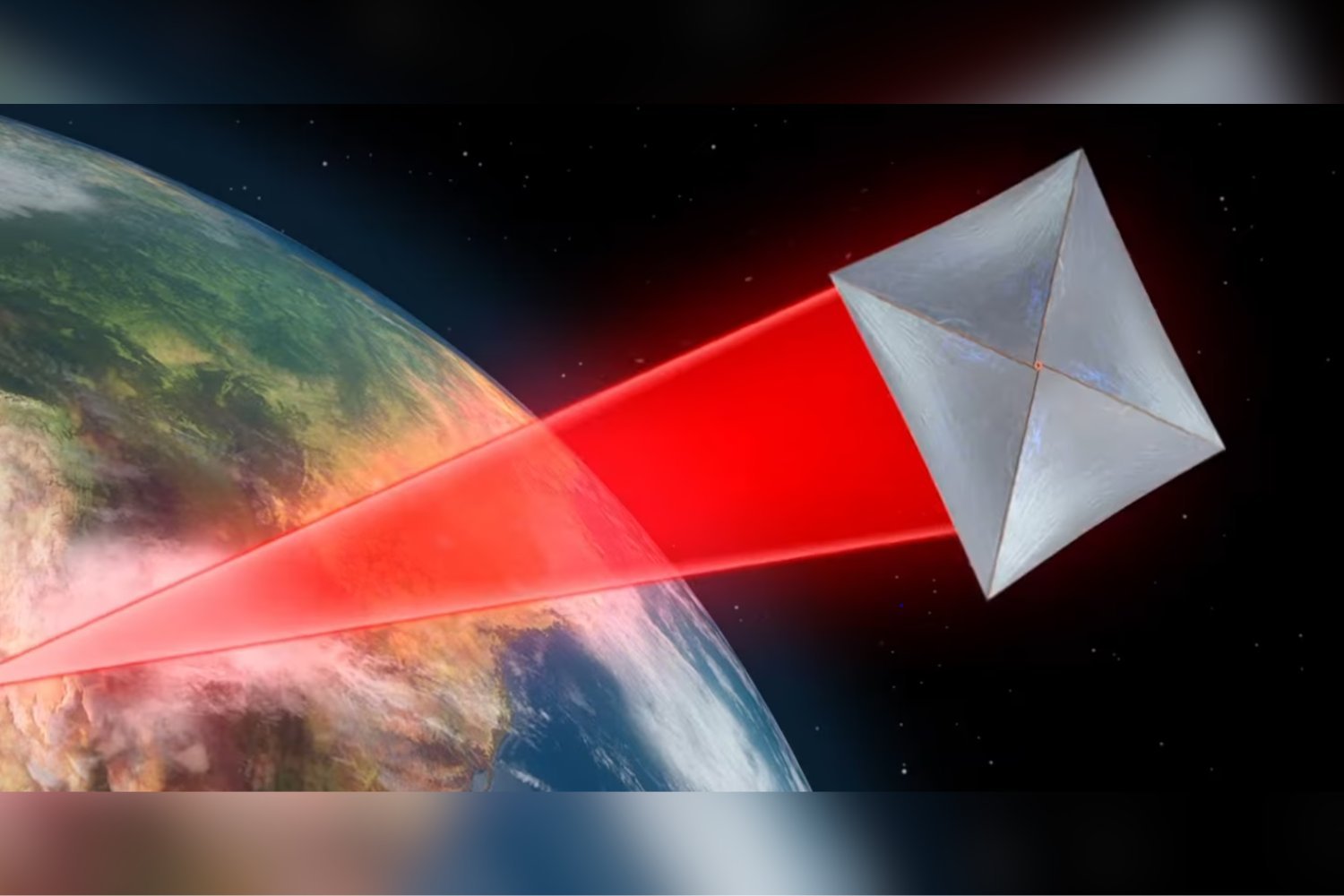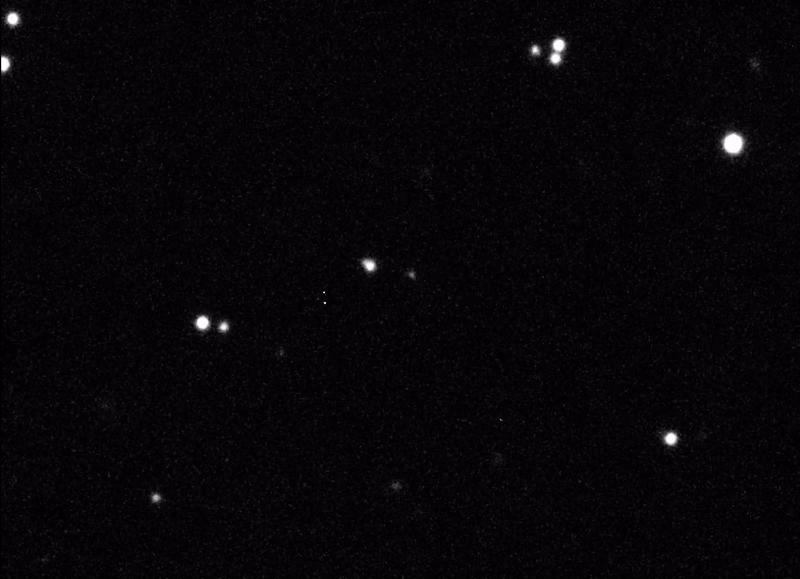Asteroid Bennu, a time capsule from the early solar system, has yielded groundbreaking discoveries. Analysis of samples collected by NASA’s OSIRIS-REx mission reveals not only evidence of past liquid water but also briny residue containing essential building blocks of life. This discovery offers tantalizing clues about the origins of life and the potential for life beyond Earth.
The samples, retrieved in 2020 when Bennu was approximately 200 million miles (322 million kilometers) from Earth, contain a wealth of unprecedented compounds. Among these is sodium carbonate, never before observed in asteroid samples. The brine also exhibits a unique chemical signature, distinct from terrestrial brines, being significantly richer in phosphorus – an element abundant in asteroids but less common on Earth. These findings reshape our understanding of Bennu’s history and offer profound insights into the potential for life to arise from the cosmos’s chemical mix.
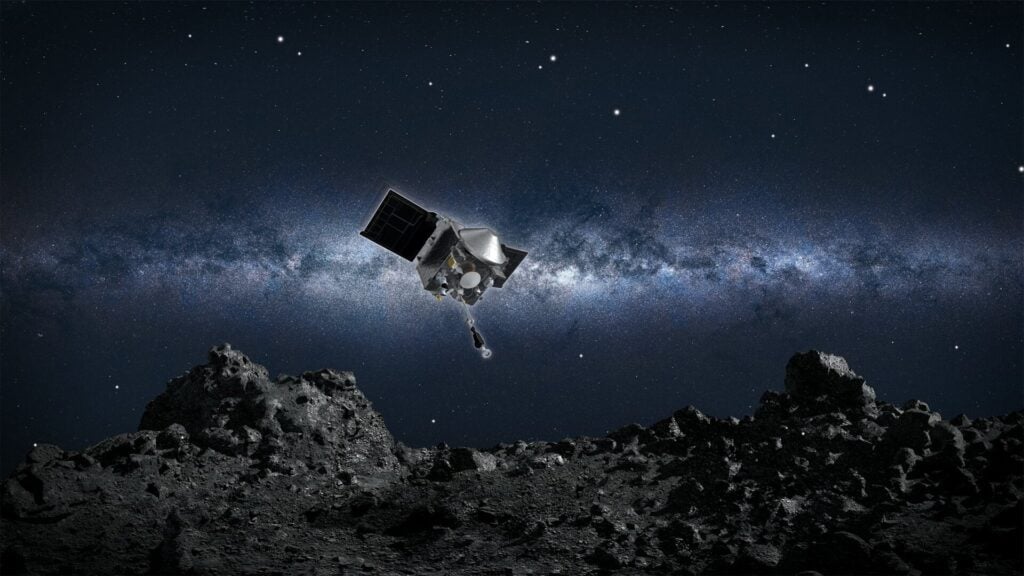 An artist’s impression of OSIRIS-REx digging into Bennu.
An artist’s impression of OSIRIS-REx digging into Bennu.
Two studies published in Nature and Nature Astronomy detail the initial analyses of these precious samples. They highlight the unique briny residue and the presence of protein-building amino acids and the five nucleobases – the fundamental components of RNA and DNA. This discovery underscores the existence of crucial life-sustaining ingredients on this ancient space rock, roughly the same age as Earth.
The OSIRIS-REx mission exceeded expectations, collecting over 4.29 ounces (121.6 grams) of asteroid material – more than twice the initial target. This abundance provides ample material for researchers to delve into the mysteries of our solar system’s formation and the origins of life itself.
Bennu: A Window into the Early Solar System
“Bennu reveals that life’s raw ingredients were interacting in complex ways on its parent body,” explains Tim McCoy, meteorite curator at the Smithsonian’s National Museum of Natural History and co-lead author of the Nature paper. “We’ve uncovered the next step on the pathway to life.”
Unlike meteorites that endure atmospheric entry and terrestrial contamination, the pristine Bennu samples, similar to those from asteroid Ryugu collected by the Hayabusa2 mission, offer an unadulterated glimpse into the early solar system.
Bennu, a fragment of a larger asteroid approximately 4.5 billion years old, provides a unique window into the past. Scientists believe this parent asteroid likely contained pockets of liquid water, a theory supported by the recent discovery of briny residue on Bennu.
Briny Clues and Cosmic Implications
As the sodium-rich water on Bennu evaporated, it left behind a crusty mineral residue. Though the water is long gone, this briny residue, rich in sodium, carbon, sulfur, phosphorus, chlorine, and fluorine, persists.
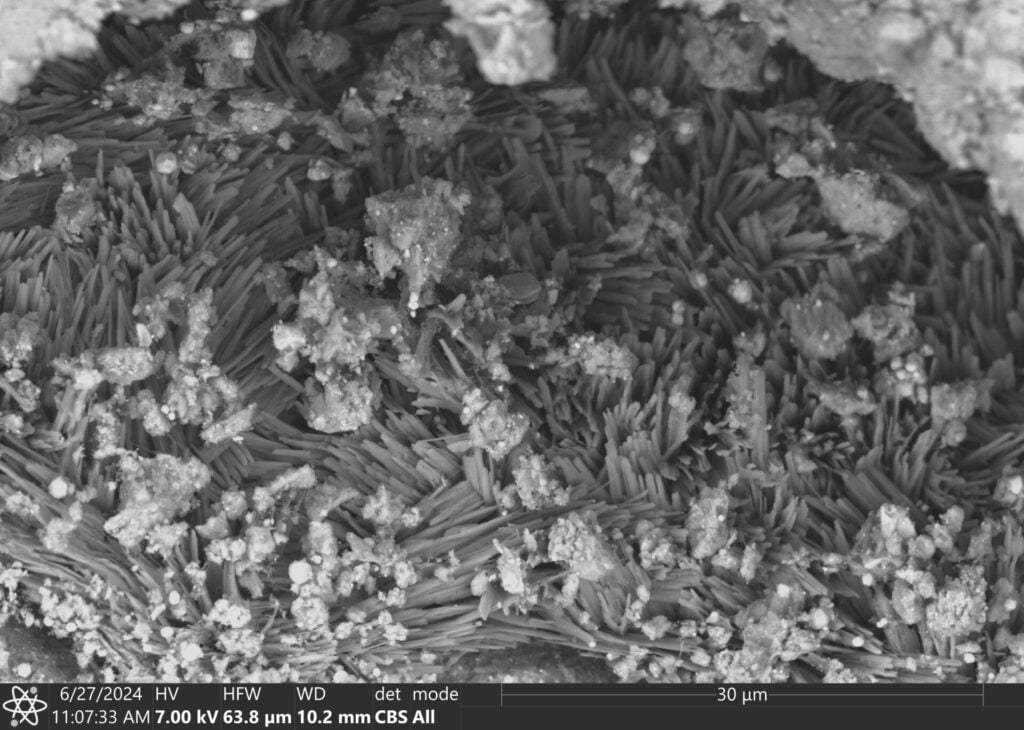 Scanning electron microscope image of trona, or soda ash, in the Bennu sample.
Scanning electron microscope image of trona, or soda ash, in the Bennu sample.
Researchers suggest that similar brines might exist on other celestial bodies, including Saturn’s moon Enceladus and the dwarf planet Ceres. Enceladus, with its subsurface ocean and observed emissions of life-essential compounds like hydrogen cyanide and phosphorus, is a particularly exciting target for astrobiology research.
Unveiling the Secrets of Life’s Origins
The Bennu samples hold immense significance for understanding the building blocks of life and the delivery of water to our early Earth. These findings amplify the excitement surrounding the mission and its potential to revolutionize our understanding of life’s origins.
“This is the kind of discovery you dream of,” remarks McCoy. “Finding the unexpected is the ultimate reward of exploration.”
The wealth of material from Bennu promises continued revelations about our solar system’s history and the distribution of life’s key components. The OSIRIS-REx mission has delivered on its promise, enriching our understanding of the cosmos and opening new avenues for exploring the possibility of life beyond Earth.



